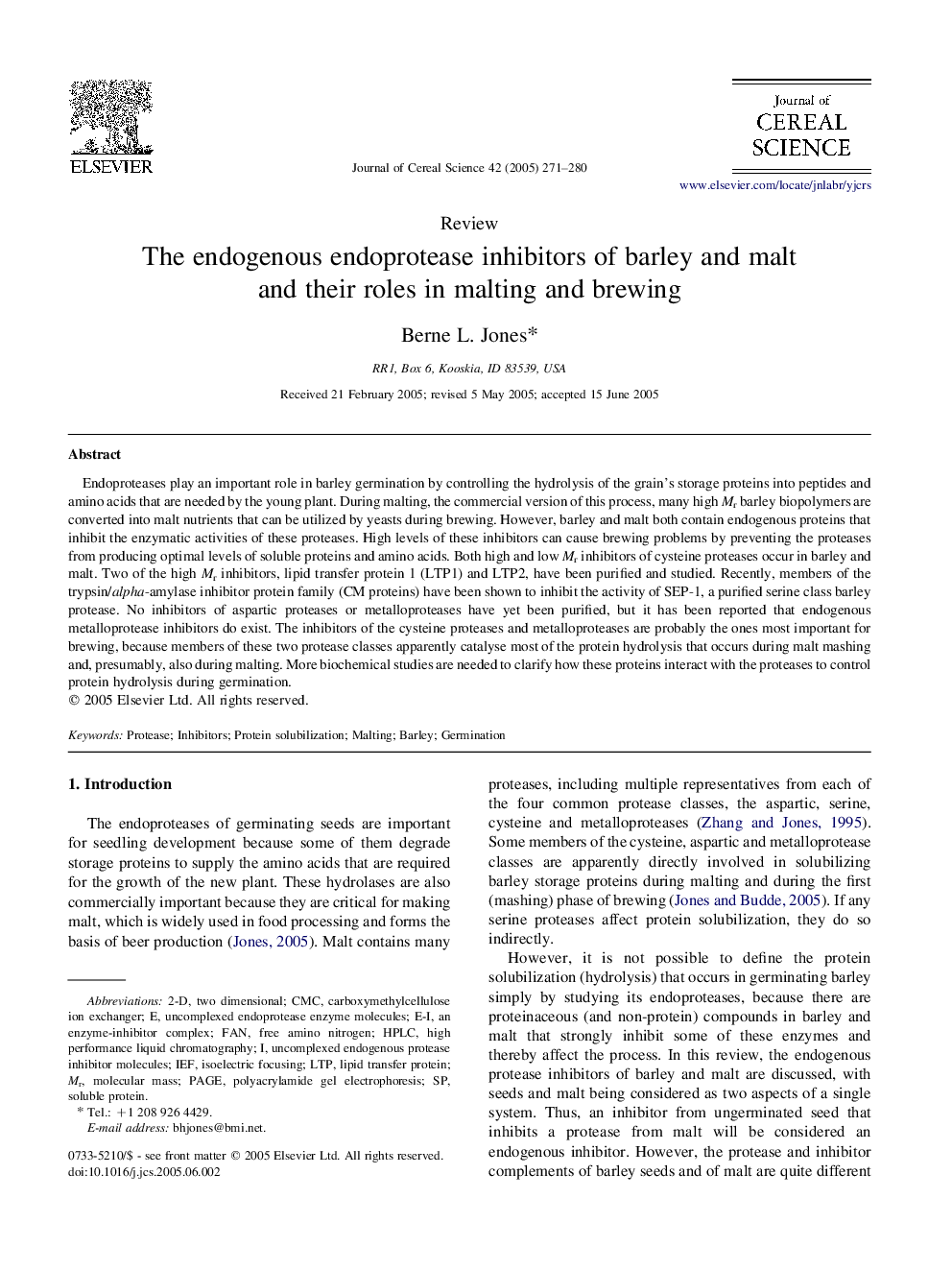| Article ID | Journal | Published Year | Pages | File Type |
|---|---|---|---|---|
| 9474516 | Journal of Cereal Science | 2005 | 10 Pages |
Abstract
Endoproteases play an important role in barley germination by controlling the hydrolysis of the grain's storage proteins into peptides and amino acids that are needed by the young plant. During malting, the commercial version of this process, many high Mr barley biopolymers are converted into malt nutrients that can be utilized by yeasts during brewing. However, barley and malt both contain endogenous proteins that inhibit the enzymatic activities of these proteases. High levels of these inhibitors can cause brewing problems by preventing the proteases from producing optimal levels of soluble proteins and amino acids. Both high and low Mr inhibitors of cysteine proteases occur in barley and malt. Two of the high Mr inhibitors, lipid transfer protein 1 (LTP1) and LTP2, have been purified and studied. Recently, members of the trypsin/alpha-amylase inhibitor protein family (CM proteins) have been shown to inhibit the activity of SEP-1, a purified serine class barley protease. No inhibitors of aspartic proteases or metalloproteases have yet been purified, but it has been reported that endogenous metalloprotease inhibitors do exist. The inhibitors of the cysteine proteases and metalloproteases are probably the ones most important for brewing, because members of these two protease classes apparently catalyse most of the protein hydrolysis that occurs during malt mashing and, presumably, also during malting. More biochemical studies are needed to clarify how these proteins interact with the proteases to control protein hydrolysis during germination.
Keywords
Related Topics
Life Sciences
Agricultural and Biological Sciences
Agronomy and Crop Science
Authors
Berne L. Jones,
